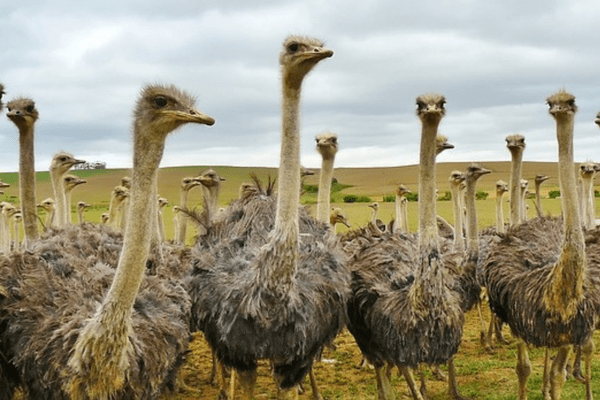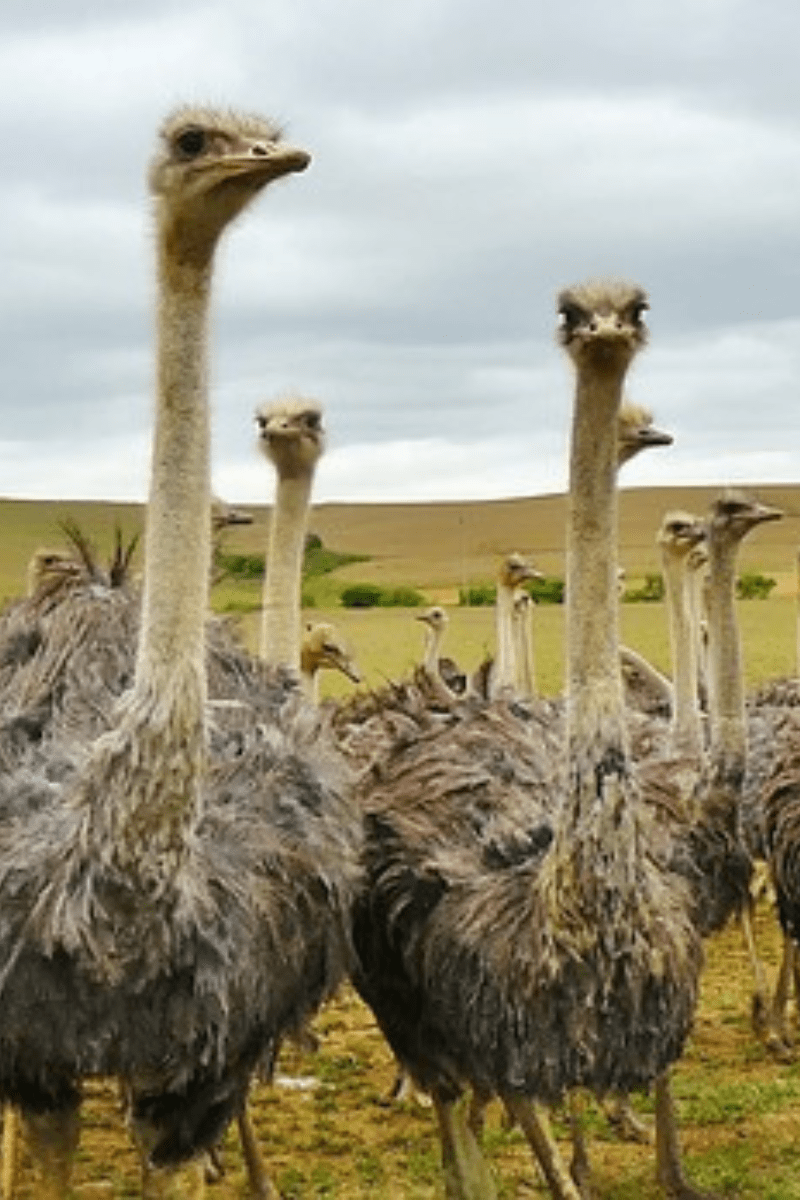Contents
- 20 Birds That Can’t Fly
- 1. Emus
- 2. Guam Rails
- 3. Galapagos Cormorants
- 4. Titicaca Grebes
- 5. Giant Coots
- 6. Ostriches
- 7. Rheas
- 8. Kiwis
- 9. Penguins
- 10. Roadrunners
- 11. Woodhens
- 12. Steamer Ducks
- 13. Cassowaries
- 14. Domestic Chickens
- 15. Brown Mesites
- 16. Broad Breasted Wild Turkeys
- 17. Wekas
- 18. Takahes
- 19. Campbell Island Teals
- 20. Auckland Island Teals
- Characteristics of Flightless Birds
- Reasons Why These Birds Can’t Fly
Have you ever wondered about different birds that can fly? Have you ever wondered which birds in particular do not have the ability to take flight? Or maybe you’ve wondered why they aren’t capable of flying. Continue below to discover detailed answers to these questions and more.
With 10,000+ bird species in existence, it’s surprising that some are incapable of taking flight. Some birds have wings that contain more fluff than actual feathers. These rare flightless birds include the Emu, Rhea, Ostrich, Guam Rail, Giant Coot, Galapagos Cormorant, Titicaca Grebe, and others.
Are you ready to learn about the flightless birds that cannot soar across the skies like their other friends and relatives? I’d like to fill you in on this topic in greater detail below.
As we move forward, I will take a deep dive into the following topics regarding birds that can’t fly. The topics include:
- 20 birds that can’t fly
- Characteristics of flightless birds
- Reasons why these birds can’t fly
- and other interesting information
To find out about these topics and more, please continue to read the rest of the article shared below.
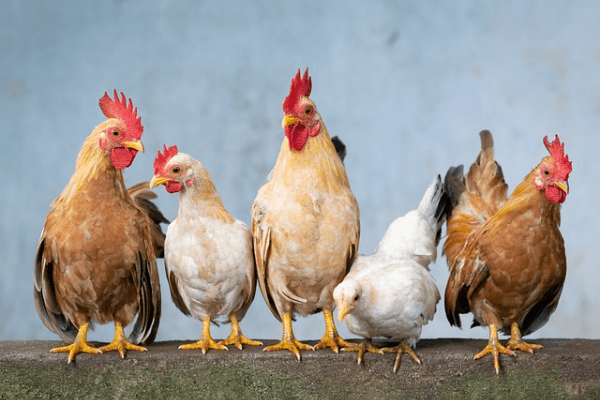
20 Birds That Can’t Fly
- Emu
- Guam Rail
- Galapagos Cormorant/Flightless Cormorant
- Titicaca Grebe
- Giant Coots
- Ostrich
- Rhea
- Kiwi
- Penguin
- Roadrunner
- Woodhen
- Steamer Duck
- Cassowary
- Domestic Chicken
- Brown Mesite
- Broad Breasted Wild Turkey
- Weka
- Takahe
- Campbell Island Teal
- Auckland Island Teal
1. Emus
The emu is a prevalent flightless bird and one that you’ve undoubtedly heard of. It’s closely related to the ostrich, yet when compared to their relatives, they are the smaller bird by contrast.
Emus have blue coloring in their heads and they can stand very tall, by as much as 6 feet. They are very protective of their families as well, so it’s best to avoid them when they are together in a familial group.
Even though it looks like the ostrich, this bird is predominantly found in Australia, whereas the ostrich is found in Africa. You can also find the emu on the islands that surround Australia as well. It’s the second-largest flightless bird.
2. Guam Rails
Guam rails, also known as Rallidae or simply rails, are small birds that remain on the ground. Certain rails do have the ability to fly, but there are also a wide number of them that do not possess the ability for flight. Other flightless rails include the pink-legged rail, the Calayan rail, and Woodford’s rail.
Besides the ones just mentioned, there were other rails that also didn’t have the ability to maintain flight. Unfortunately, these other versions of the species are now extinct, unlike the Guam rail.
3. Galapagos Cormorants
The Galapagos Cormorant, also known as the Flightless Cormorant, is one of the unique birds that are flightless with shorter wings and members of the cormorant species. Besides the Galapagos Islands, you could also find them in isolated areas within Ecuador.
Overall, flightless cormorants are roughly 35-39.5 inches long. And they can weigh anywhere from 5.5-11 pounds. They have brownish-black plumage and long beaks with a sharp look, and even though it’s one of the largest birds with powerful legs, the species of these birds can fly, mostly because they have smaller wing bones.
According to A-Z Animals, “To move around, they rely on their web feet and strong legs to propel them through the water. The diet of the flightless Cormorant consists mostly of fish and octopuses. Since they don’t possess waterproof feathers, they must dry off regularly between swimming trips.”
4. Titicaca Grebes
The Titicaca Grebe are exceptional flightless birds that also have short wings. In fact, another name for this bird is called the Short-Winged Grebe. Unfortunately, this bird is also considered an endangered species, so its population is protected, which mainly is around the area of Lake Titicaca, Lake Poopo, and Lake Uru Uru.
This is a midsized bird that weighs roughly 600 g and its length is anywhere from 28-45 cm long. It has unmistakable coloration and even though it resembles the red-necked Grebe, you will not find it in the South Americas.
5. Giant Coots
Giant coots are very fat birds, to put it bluntly. Its large size is the basic reason why this bird cannot fly.
This bird is native to South America and when it builds a nest, it will do so on the water. The giant coot is a bird that will reuse its nest from season to season.
Interestingly, when giant coots are young they actually can fly. But they lose this ability as they become adults because they grow into such large, stout birds with huge physiques.
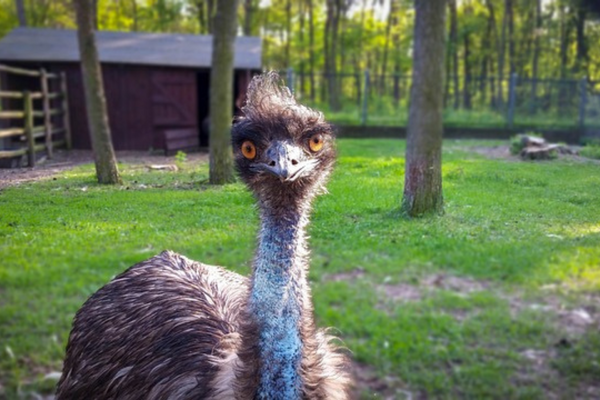
6. Ostriches
Even though ostriches cannot fly, they are the fastest runners out of all the birds on earth. One of the main reasons why they can run so fast is because they need to be able to escape from invasive predators or natural predators.
The ostrich is a living species of bird that is massive in size but it isn’t a dangerous bird. But it also has short or puny wings, which is the reason why this bird can fly.
Nevertheless, their wings are used to help them balance while running. They also use their wings as part of intricate courtship displays, which is a beautiful sight to behold.
As of this writing, only two birds of ostrich descent still remain alive. They both live out in Africa in the wild, but there are also some on commercial farms. This massive bird weighs anywhere from 140-325 pounds and can stand as high as 9 feet tall.
7. Rheas
Rheas, better known as the greater Rhea, is a fascinating flightless bird to say the least. This is an American bird with the scientific name Rhea Americana. The flightless bird can be found in Eastern South America, where it is a native.
Most commonly, this bird is native to Uruguay, Paraguay, Argentina, Bolivia, and Brazil. It prefers open areas including grassy wetlands, savannas, and grasslands. Plus, it cannot fly.
The Rhea can weigh between 44-60 pounds and it is the largest native extant bird within the Americas.
8. Kiwis
The Kiwi is the smallest flightless bird that should never be confused with the fruit. Others say the inaccessible island rail is the smallest bird that doesn’t fly. Regardless, this bird, as you can imagine, is a native to New Zealand. Is very small in size and stature and many people compare it to a chicken.
This bird isn’t found anywhere else besides New Zealand and there are currently five known species. Its body is covered with thick yet very small feathers, which creates wings that are practically nonexistent.
This nocturnal species is ready to eat anything. It’s an omnivore and it will eat a wide variety of different types of food including insects, snails, spiders, centipedes, slugs, woodlice, millipedes, plant material, seeds, and berries.
Related article: Climate Change & Its Impact On Our Birds
9. Penguins
It shouldn’t surprise anyone to learn that penguins are nonflying birds. This is particularly true about Emperor penguins.
I bet you’ve never seen a dancing penguin besides cartoons! Well, they don’t dance but they are definitely incredible swimmers.
In fact, the Emperor penguin and other penguins have the ability to stay underwater for roughly 30 minutes. And they swim incredibly fast as well. They can swim from 4-22 mph, which is insanely fast.
Why do penguins fail to fly? Their bodies are much larger and heavier than their wings, which steals away their ability to take flight.
10. Roadrunners
Like many in the bird world, roadrunners actually do have the ability to fly, but they rarely do so and spend the majority of their time on the ground. In fact, this bird is known for its ability to sprint because it can move at incredibly fast speeds.
It isn’t the fastest bird in the world, which is the ostrich, but it can run at speeds of 32 km/h, which means it’s incredibly fast.
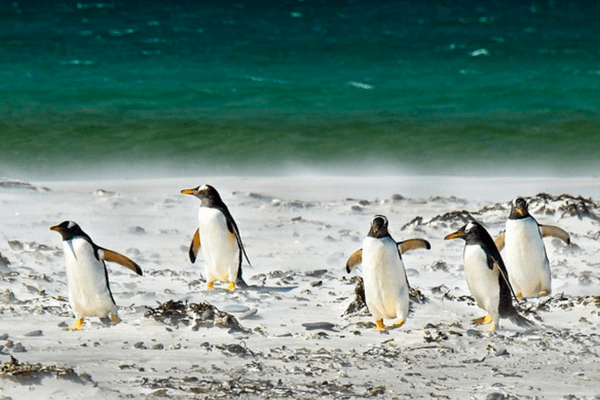
11. Woodhens
There are a number of different Woodhens in existence today, and the wide majority of them are believed to be flightless.
For example, we currently know of the Lord Howe Woodhen, the Makira Woodhen, and the Samoan Woodhen. We know with certainty that each one of these birds cannot fly.
Even more interesting, the Woodhen is actually a Rail bird, which provides even greater measures of proof that Rails do not possess the ability to fly.
12. Steamer Ducks
Steamer Ducks, also known as the Magellanic steamer duck, is a member of the duck species but it does not possess the ability to take flight. This bird is mostly found in South America, and more specifically, it lives in Tierra del Fuego and the surrounding area.
Unlike other ducks, the Magellanic steamer duck doesn’t have a very large body and it can’t run fast either. But it is an incredible swimmer, which is why it spends the bulk of its existence on the water. The flying steamer duck will hunt and swim in the water for the majority of its life.
13. Cassowaries
The cassowary is a large bird but it definitely isn’t one of the heaviest. It is rather bulky and in a very rare turn of events, the female cassowary actually weighs more than the male.
On average, this bird weighs around 105 pounds for males. Females, on the other hand, can weigh as much as 120 pounds or more.
As mentioned, these birds are very well-built and quite bulky. And they are also quite tall. The males are as tall as 5.75 feet and females can reach up to 6 feet tall.
Related article: 8 Bird Species That Migrate Incredible Distances
14. Domestic Chickens
The Domestic Chicken found its way onto the list of flightless birds even though it does have the ability to fly. It can only fly for really short distances and it cannot fly for long periods of time. So, in essence, even though it can take wing into the air, it cannot do it very well. So, this bird really doesn’t fly and spends the majority of his life on the ground.
In fact, the majority of domestic chickens can be found on farms throughout the United States. This bird is bread for feeding the population, so the majority of them are being fattened all the time. This helps the food producers to provide more meat with each chicken.
Combine this with the fact that they had a difficult time flying at their normal weight and we consider the domestic chicken to be a flightless bird.
15. Brown Mesites
The Brown Mesite bird is a member of the Mesitornithiformes family. These are incredibly small birds to say the least, and they are possibly flightless.
Although it hasn’t been officially confirmed yet, this little bird is believed to be flightless. Why? No one has ever seen it fly.
Predominantly speaking, you will find the Brown Mesite living in Madagascar. Besides this bird, there are only two other species in the Mesite family.
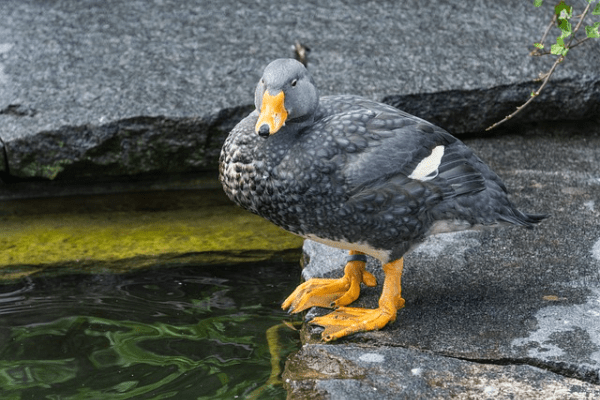
16. Broad Breasted Wild Turkeys
The broad-breasted wild turkey is a flightless bird with a very long name. In fact, out of all the birds on this list of flightless ones, their name is the longest.
This fowl cannot fly due to selective breeding. This bird is bred in a way that it weighs more for feeding purposes. Unfortunately, by gaining so much weight, these birds also end up suffering from health problems, which certainly is not good.
17. Wekas
Wekas are birds that can’t fly. It may not seem like it, but there are thousands of them, and this is one of the species without this ability.
According to thayerbirding.com, “These birds are scavengers in nature, and they’re never afraid to come close to humans to ask for food. Wekas have a nonappearance with red eyes.”
Other names for this bird include the Maori hand or the wooden. It’s endemic to New Zealand and it’s a flightless bird that is also a member of the rail family.
18. Takahes
The South Island Takahe is a bird that mainly lives in the Alpine grasslands of New Zealand, which is its native habitat. It is a slow-moving species with a large body and small wings. In fact, their wings are so short that they do not have the ability to support their body’s weight.
It’s also important to know that these birds do not move very fast; they weigh roughly 3 kg and are 65 cm in length.
They mainly reside on land because they do not have the ability to fly. This species is also critically endangered and there aren’t very many still in existence. It’s estimated that there are only 300 Takahes still existing in the world, so it needs to escape predators.
19. Campbell Island Teals
The Campbell Teal is another member of the duck species that do not possess the ability to take flight. It should not be confused with the Falkland steamer duck. It dwells on the same islands, so it doesn’t really need to fly, which is certainly a good thing for this bird.
In other news, the Campbell Teal is a nonflying bird on the verge of extinction. Members of wildlife preservation societies around the world are doing everything in their power to help increase the population of the Campbell teal.
20. Auckland Island Teals
Auckland Island Teals are another type of duck that does not have the ability to fly. In fact, this bird is relatively protected because it remains on islands in New Zealand that do not have predators. This makes it easy for the Auckland Island Teal to survive and thrive.
This bird has brown plumage with specks of green that cover the nape of their neck and it is not New Zealand’s national bird. They have a white ring around their eyes and their wings are also very short. The short wings also contribute to their inability to fly.
Characteristics of Flightless Birds
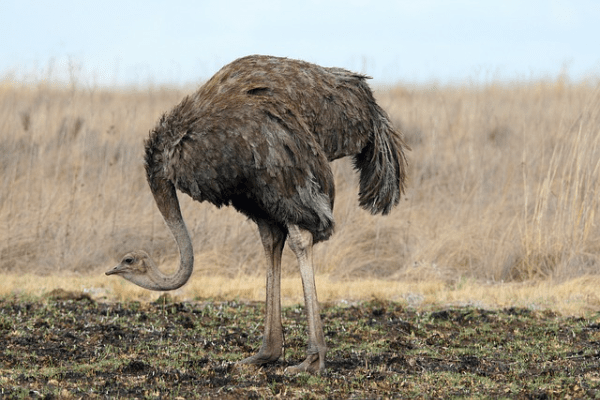
Many flightless birds will have different characteristics from most species. Nevertheless, all of these birds that do not fly typically tend to possess common traits. They include the following:
- According to earthreminder.com, “Flightless birds are usually more massive than their flying cousins.”
- These birds tend to have very strong legs to help them run because they have adapted to living on the land.
- They do not possess a keel, which is a bony plate in their chest to help them flap their wings.
- Their wings are not usable because they typically possess smaller wing bones. More often than not, these birds are heavier and have massive bodies compared to other birds that can fly.
- Flightless birds have a pectoral apparatus that is smaller than other birds that have the ability to take flight. This apparatus propels the body forward during flight, which makes it difficult for these birds to stay in the air.
Reasons Why These Birds Can’t Fly
These birds have a difficult time flying for a number of different reasons. They include the following:
- Most flightless birds do not have a breastbone keel. This keel bone anchors the muscles necessary for flight
- Penguins can fly even though they possess a keel bone. The main reason they don’t fly is that they’ve evolved into water-dwelling creatures as opposed to birds that fly through the air.
- More often than not, birds that aren’t capable of flight tend to have longer legs and bigger bodies than other birds that do fly.
- Most of these flightless birds have puny wings. Their tiny wings make it impossible for them to lift their gigantic bodies off the ground.

